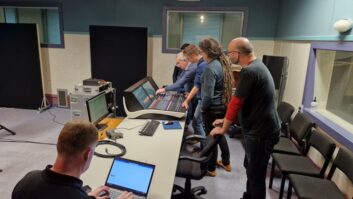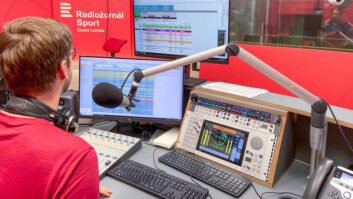
Geneva, Switzerland (August 28, 2024)—The International Telecommunication Union has issued an updated version of the Radio Regulations, the international treaty governing the global use of radio-frequency spectrum—including in sound and television broadcast—and satellite orbits.
Effective January 1, 2025, the 2024 edition of the ITU Radio Regulations (download here) is the result of a four-year process that culminated in four weeks of negotiations during the World Radiocommunication Conference (WRC-23), hosted last year in Dubai, United Arab Emirates.
The ITU Radio Regulations govern the global use of radio-frequency spectrum and satellite orbits for all radio services, systems and applications, including fixed and mobile broadband, satellite systems, sound and TV broadcasting, radionavigation, meteorological monitoring and prediction, space research and Earth exploration, amateur radio services and other topics.
“The 2024 edition of the Radio Regulations marks a significant milestone in the world of technology,” said ITU Secretary-General Doreen Bogdan-Martin. “As technological progress advances and the demand for spectrum grows, the international treaty continues to evolve to accommodate new radiocommunication services and applications, minimize interference between services, and ensure equitable access to this essential resource.”
The treaty serves as the cornerstone of international radio frequency management, ensuring that spectrum allocations keep pace with the rapidly evolving technological landscape and meet the needs of modern communication systems.
Treaty provisions also direct how radio equipment and systems must operate to ensure efficient and effective coexistence among various services worldwide and anywhere in space, optimizing the usage of today’s increasingly crowded airwaves.
The 2024 Radio Regulations identifies new spectrum resources to support technological innovation, deepen global connectivity, increase access to and equitable use of space-based radio resources, and enhance safety at sea, in the air, and on land.
Global regulation of the radio spectrum began with the signing of the first International Radio Telegraph Convention in Berlin in 1906 by 30 states. Today, the treaty establishes the rights and obligations of ITU’s 193 member states and now covers more than 40 different radiocommunication services, spanning frequencies from 8.3 kHz to 3000 GHz.
The ITU Radio Regulations facilitate equitable access to and rational use of the radio-frequency spectrum and geostationary satellite orbits, both globally shared and limited natural resources; support the efficient and effective operation of all radio communication services; and, as necessary, facilitate the introduction and regulation of new radiocommunication services and technologies.







